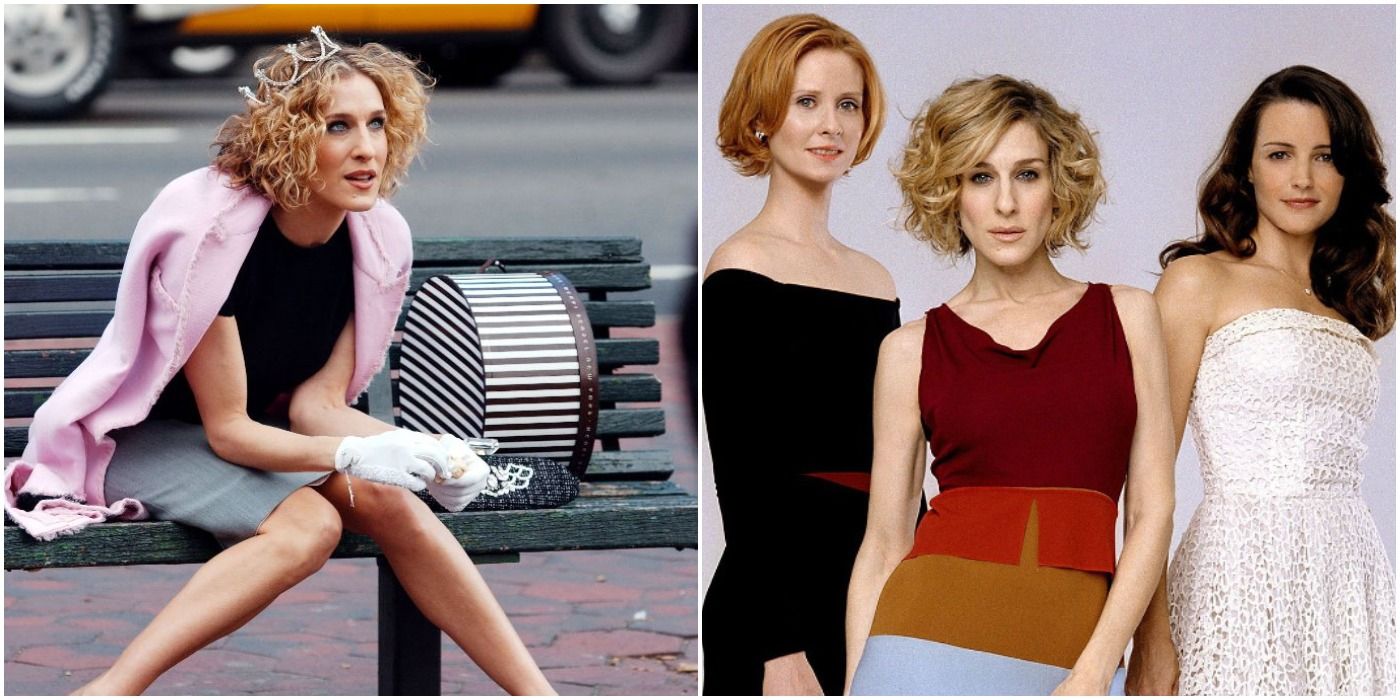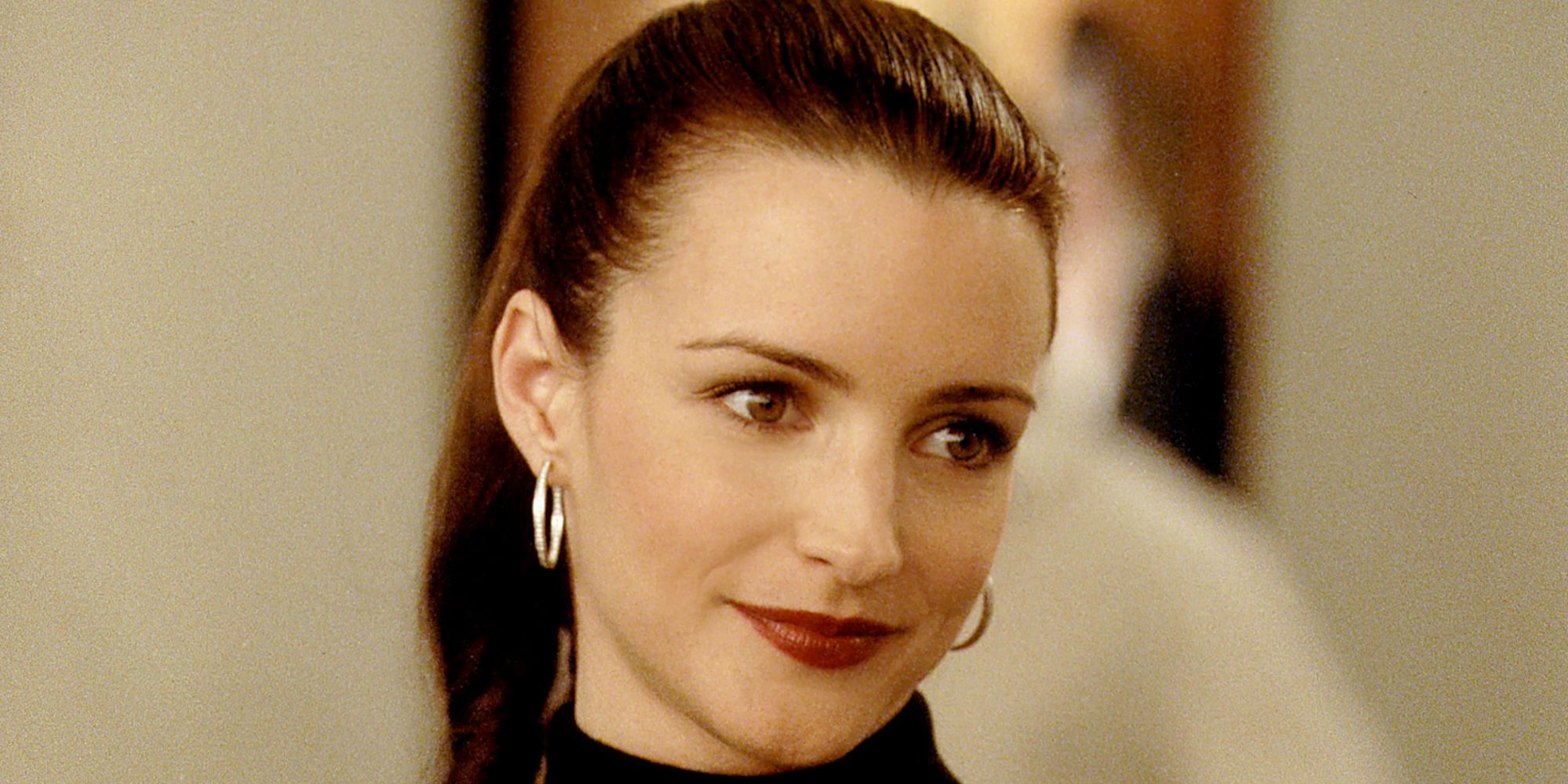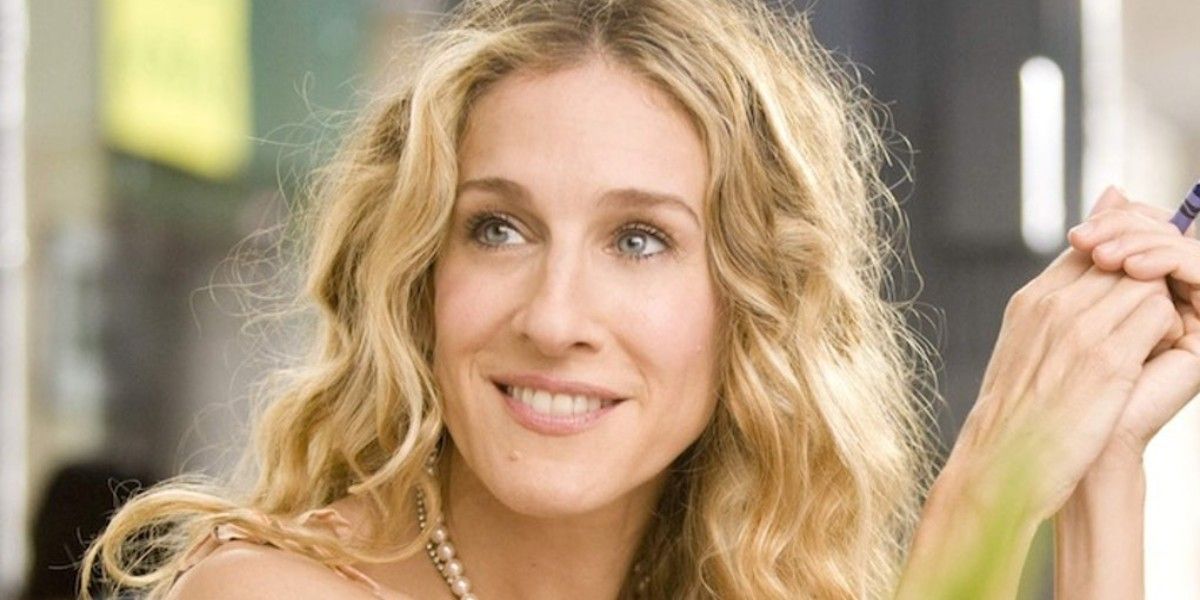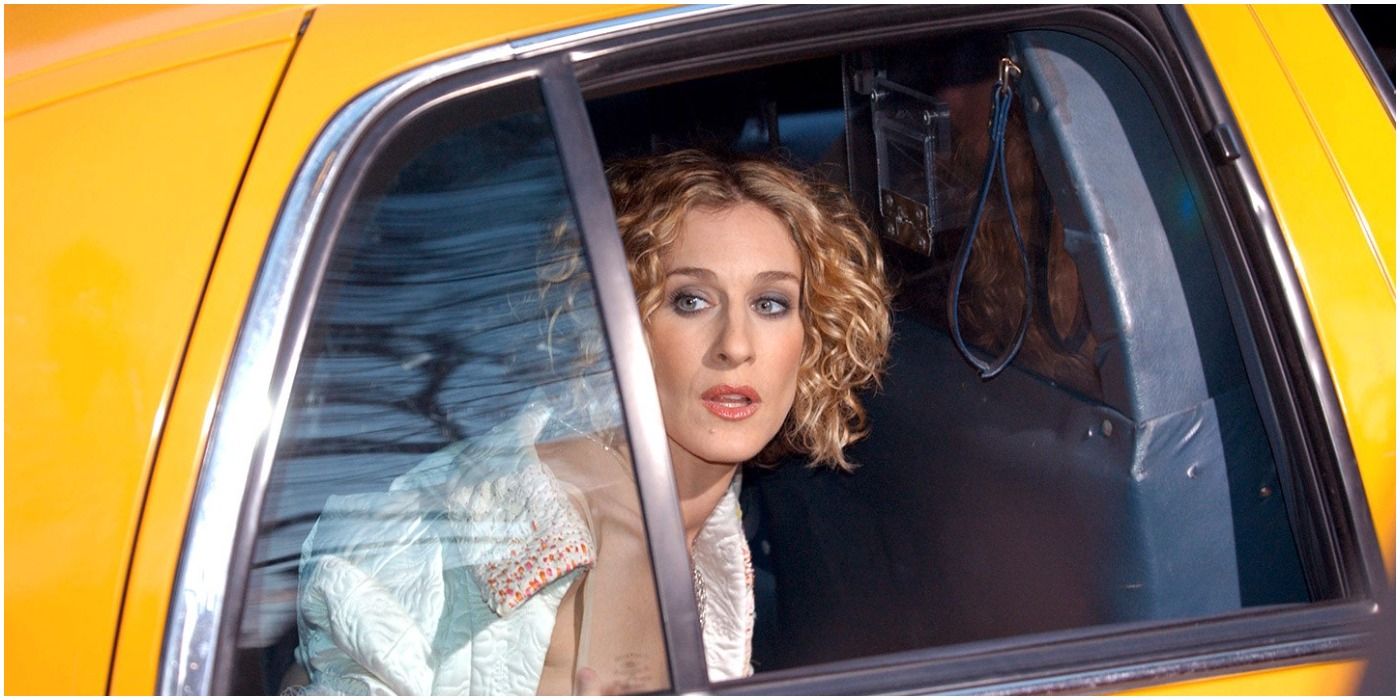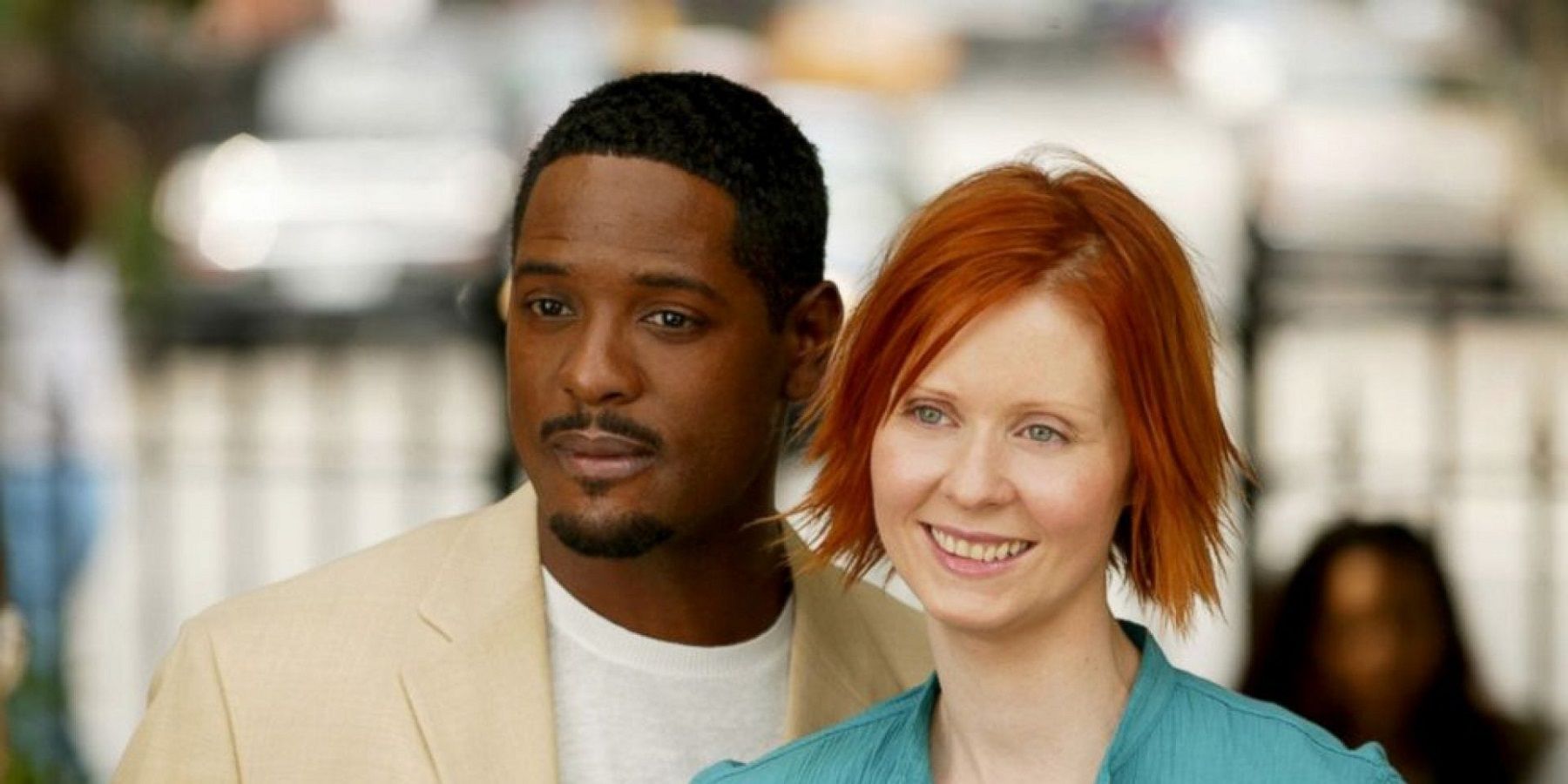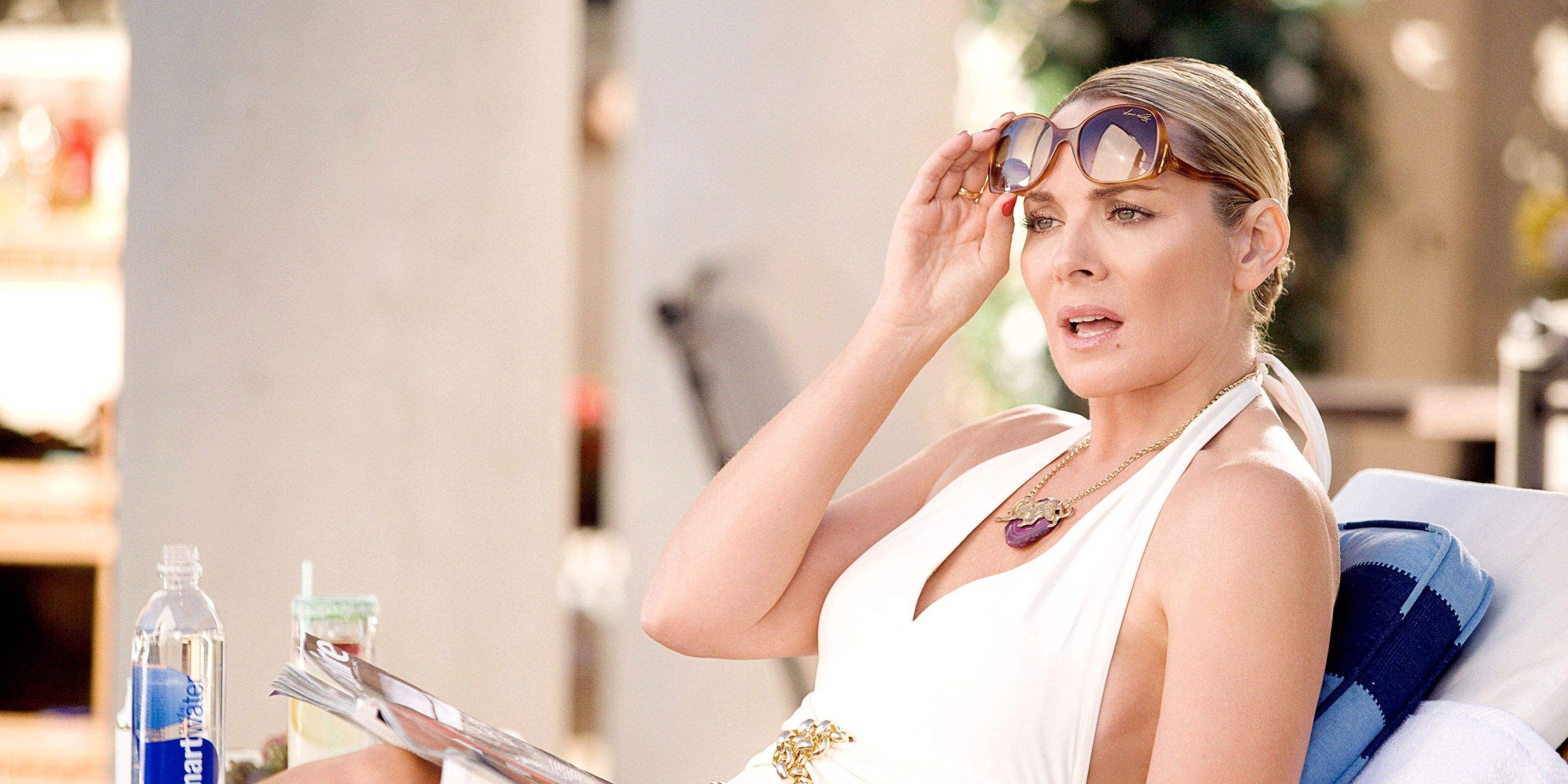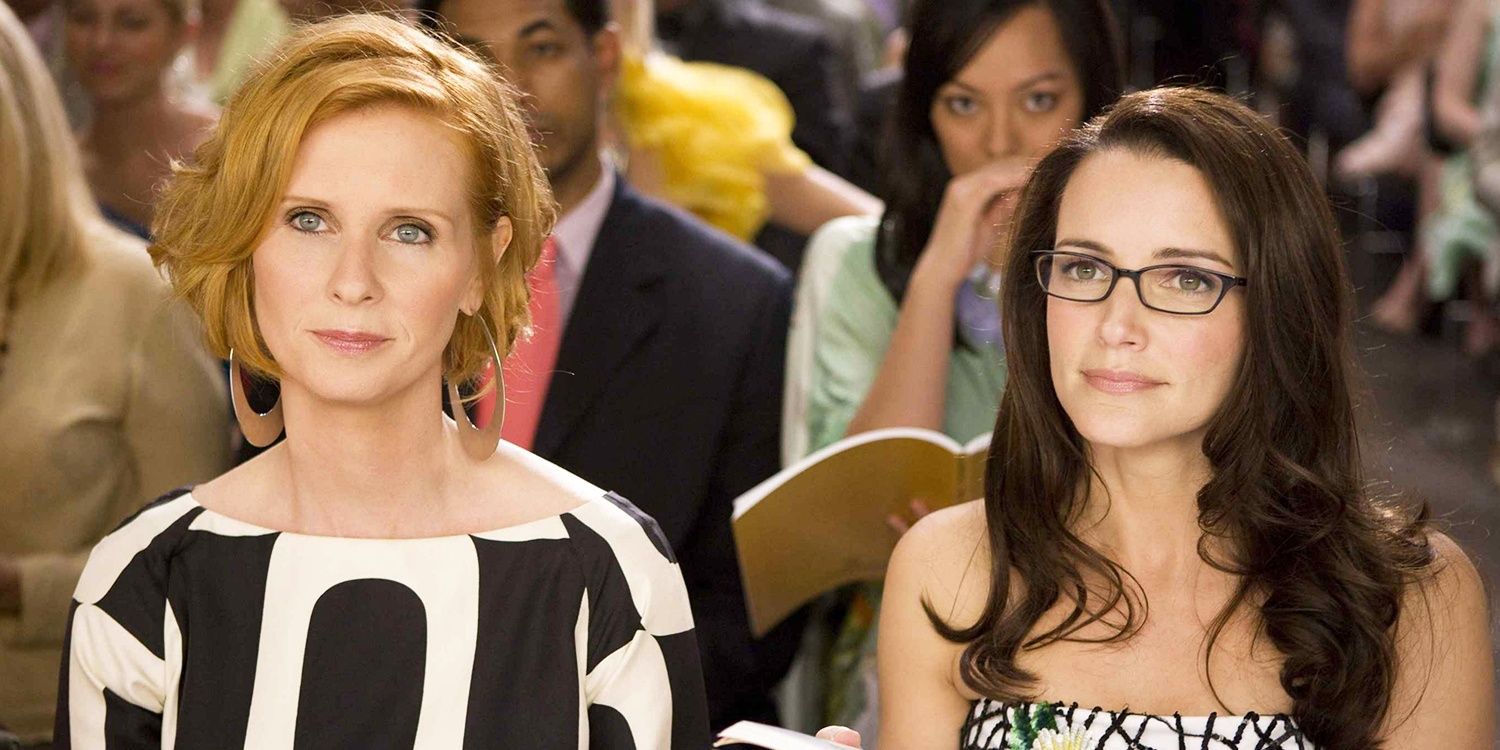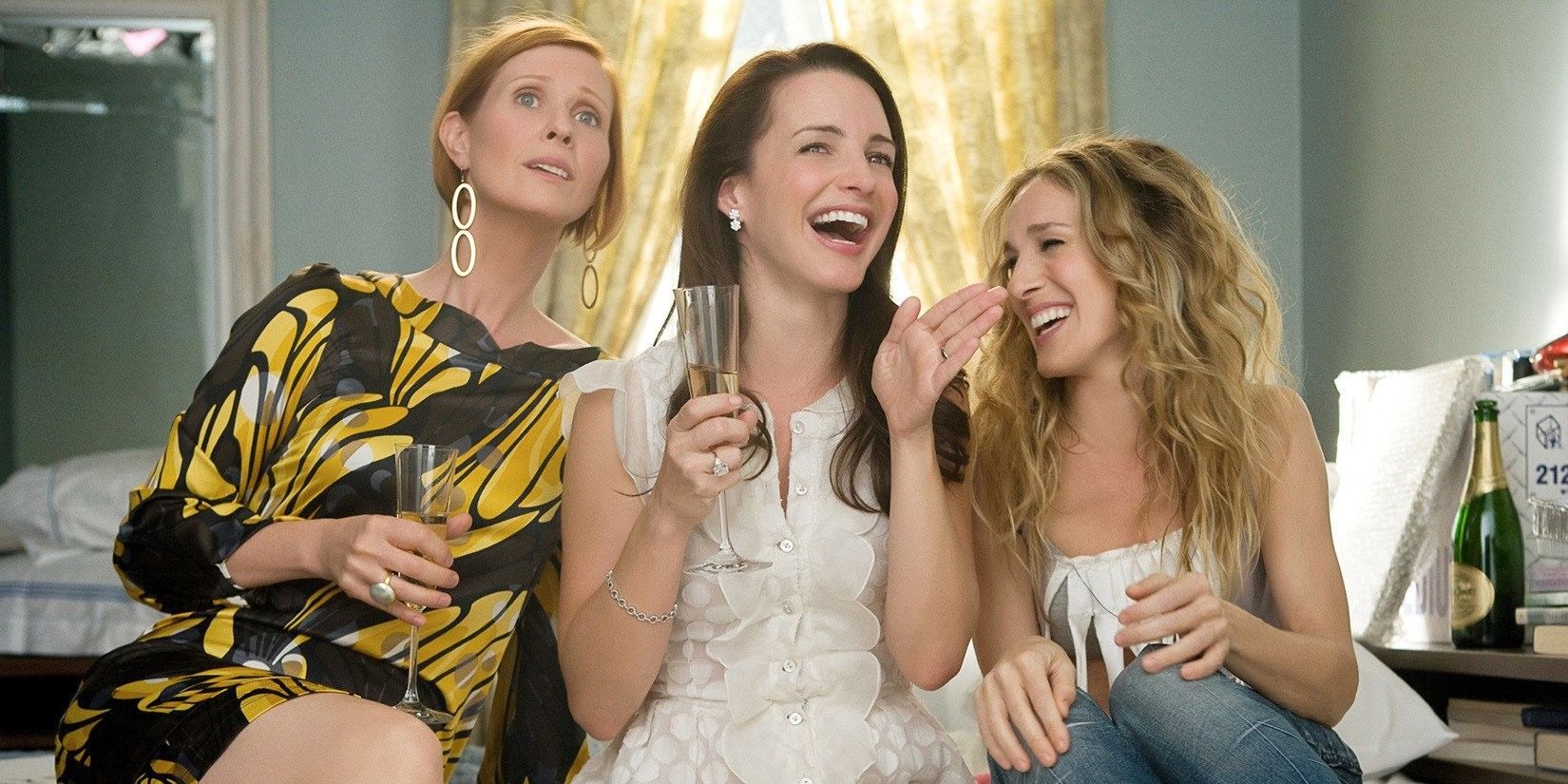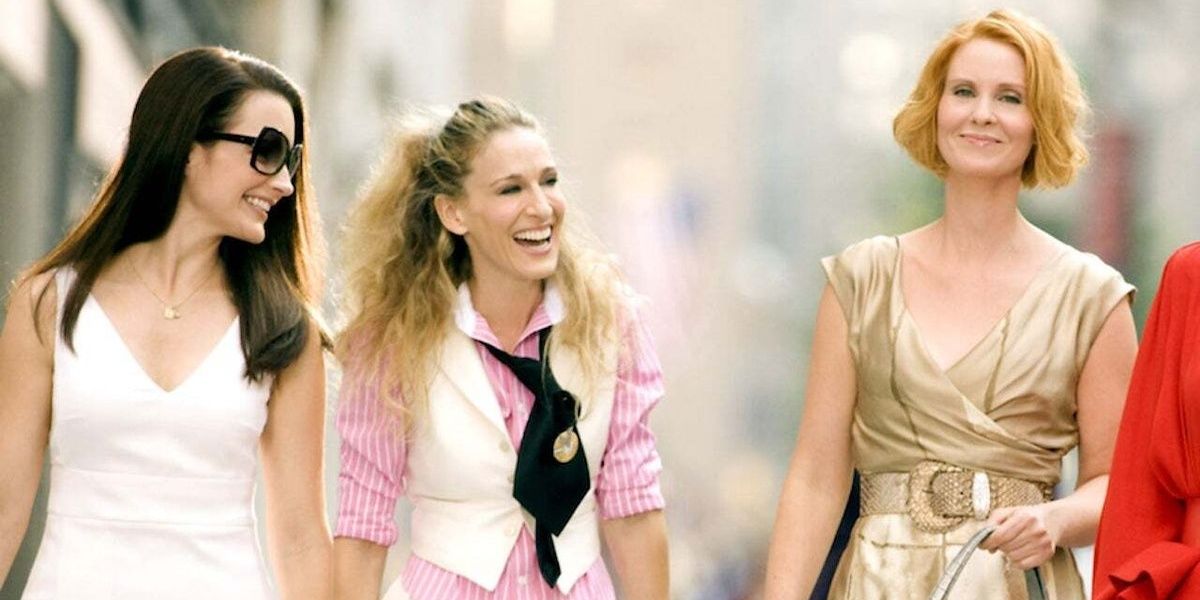When it debuted in 1998, Sex and the City was like a rush of cold air on a November morning in New York City. It left viewers feeling flush-faced as it dived fearlessly into the triumphs and tribulations of four intelligent women in their 30s navigating love in the Big Apple. As daring as it was for Carrie, Charlotte, Miranda, and Samantha to candidly discuss sex, parts of their body, and babies versus careers, there were problems with the series as fetid as NYC sewers on a summer day.
Vogue contributor Raven Smith has said that in order to enjoy Sex and the City now, fans have to "park [their] wokeness", citing the many problems that it had around diversity, well-rounded LGBTQ+ characters, and mental health, to name a few. Now that a revival is in the works, fans have been debating whether or not the next ten episodes should address any of the original series' issues, or treat the past like last season's trends.
Should: Accountability
While it aired (and much more so in the interim years since the movies), Sex and the City was criticized for its lack of diversity, its tokenism, its issues around body-shaming (for both men and women), and even its perspective on "modern women" from the point of view of four affluent white women.
Since everyone involved in the current revival is well aware of the issues the original series did — and didn't — address, they can take accountability for its shortcomings in a way that feels appropriate with writing and casting choices, as well as whom they employ creatively behind the camera.
Shouldn't: More Time To Focus On New Issues
Covering old ground may be tedious for newer audiences that will be less aware of the original series' shortcomings and less interested in going back over concerns that have since been tackled in better ways with series like Girls.
The revival will have a chance to focus on new issues, in the same way that it paved the way for so many others when it debuted, such as women taking control of their sexuality. Fans may feel that any issues surrounding diversity would naturally be addressed through the creative teams' storytelling choices.
Should: Reflect Current Audience And Appeal To New Fans
Sex and the City amassed a wide audience that included a variety of demographics. Despite not including the most positive portrayals of the LGBTQ+ community, people with disabilities, people of color, and neurodivergent individuals, these groups still tuned in to see what Carrie, Miranda, Charlotte, and Sam were up to next.
The casting choices made for the revival have a chance to reflect it's audience, which will include previous and new viewers who span many groups. Old fans will most likely appreciate that they finally see themselves represented, and new viewers will expect it.
Shouldn't: Remain Escapism
Though the series was rooted in reality, it was always peak escapism. While it was true, there were plenty of freelance writers brunching with their best friends, they weren't living in rent-controlled apartments and purchasing $40,000 worth of designer shoes writing an article a week.
By keeping the series as it was, it will be able to maintain its reputation as an escapist bastion. Inspecting it too closely was a bit like Carrie walking the runway at Fashion Week; it always crumbled under criticism.
Should: Better Representation
Sex and the City was candid about white women's sexuality and romantic lives according to women of a certain socio-economic status, and therefore couldn't be relatable to all viewers. While it still garnered plenty of attention from a diverse audience, it didn't represent them on the screen, one of the most prominent things about it that hasn't aged well.
Members of the trans community were made the butt of jokes, people of color were present during episodes that focused on the growth of the four white leads and then never seen again, and characters with ADHD or Nymphomania were treated as freaks. The revival has a chance to make everyone feel seen, validated, and supported.
Shouldn't: Giving Trolls A Platform
While much of the criticism directed towards Sex and the City has been perfectly valid, some of it has simply been for its own sake, or inspired by the feud between leading members of the cast like Sarah Jessica Parker and Kim Catrall.
By acknowledging every perceived "issue" in the original series, the creative minds behind the revival as well as the cast may feel themselves caving to pressure that affects the quality of the production. Fans should be wary of too much fan service in their favorite series.
Should: Show New Growth
Sex and the City was certainly innovative in a television landscape that didn't have nearly enough female-focused programming. Not only did the series tell women they could have fulfilling lives without settling for a man, it also tackled very mature themes with Samantha’s cancer scare, Miranda's postpartum depression, and Charlotte’s fertility struggles.
With so much female empowerment going on, it was a shame that by the end of the series, all of the women ended up in long-term relationships despite declaring each other their soulmates. Hopefully the revival will have the courage to commit to the premise of the original series and show new growth for the characters, possibly even including several married couples ending up divorced.
Shouldn't: It Will Change The Dynamic
Sex and the City remains a product of its time, and addressing some of its problems might change the dynamics of the revival if the creative team behind it intends to capture the same feeling of the original.
Addressing the issues of classism that Charlotte astutely brought up in Season 4, for instance, might disrupt the fact that the women are supposed to remain oblivious of their privilege. The revival might assume every one of the friends will be more progressive in their thinking, which might not be the case according to what makes sense for their narratives.
Should: Reflect Current Movements Like Body Positivity
Despite all being slender and attractive, Carrie, Miranda, Charlotte, and Samantha all participated in being fat-phobic. The worst thing any of them could do was gain weight. Miranda desperately joined Weight Watches to lose the tiny amount of weight she gained from her pregnancy, Charlotte always worried about her thighs, and when Samantha gained a barely-there tummy from depression, she was immediately a topic of conversation for her friends.
The Body Positivity Movement may not have been alive and well in 1998 when the show debuted, but now women and men are celebrating being happy in a variety of shapes and sizes. Hopefully the revival will no longer include the women talking about force-feeding lard to runway models, or insulting their dates' private parts (or back hair, in Harry's case).
Shouldn't: Better Continuity
Trying to change certain aspects of the series may make the revival feel too different from the original in a way that pulls fans out of the viewing experience. Taking a "warts and all" approach to the revival might make the transition from the two Sex and the City movies a more seamless one.
For fans concerned that the revival will already be too radically different, maintaining continuity might be the only thing that makes them feel connected to what they know, especially since so much time has passed between its release and the last time the whole cast was together.

